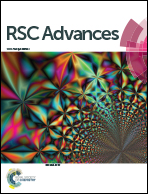Tensile mechanical properties of Ni3Al nanowires at intermediate temperature
Abstract
Molecular dynamics (MD) methods are employed to study the mechanical properties of Ni3Al nanowires (NWs) along the [001], [110] and [111] crystal orientations under tensile loading at intermediate temperatures. The stress–strain responses, Young's modulus, elongations and crystal defects of NWs are compared at different temperatures and different crystal orientations. The simulation results indicate that the yield stress decreases linearly with an increase in temperature, which is the same as the trend for Young's modulus. In addition, tensile tests exhibit that Ni3Al NWs have an obvious intermediate temperature brittleness (ITB) behavior at about 900–1100 K. The crystal structure is less stable at intermediate temperatures. Furthermore, we find that the different crystal defects formed are mainly point dislocations and stacking faults. The higher the stacking fault energy (SFE) of Ni3Al NWs, the easier are the dislocation slips. The glide dislocation expands within the {111} glide plane. In general, studying the relation between the incipient plastic deformation and the temperature of Ni3Al NWs at different crystal orientations can help us further understand the mechanical properties accurately and completely.


 Please wait while we load your content...
Please wait while we load your content...